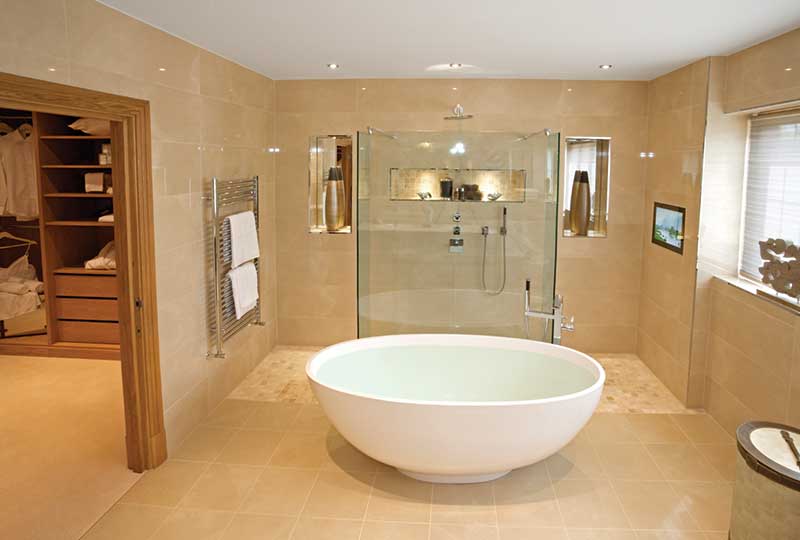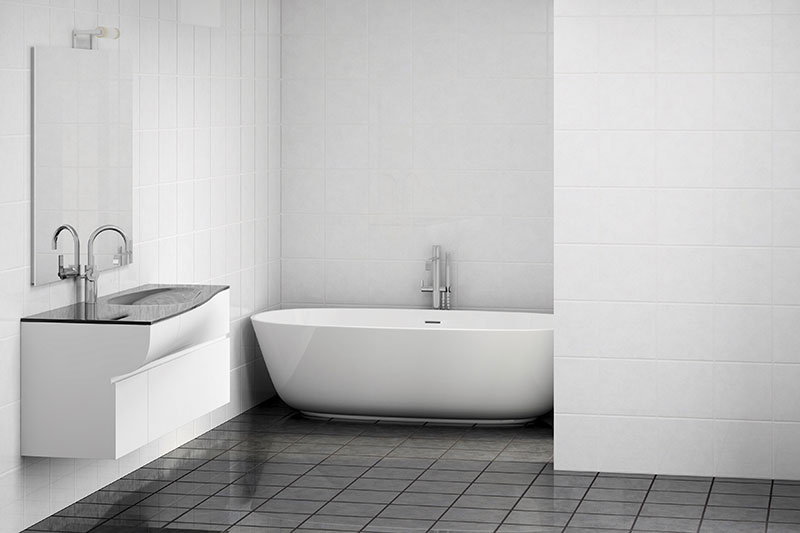Radiant floor heating is quickly becoming one of the most popular heating solutions in the world. This innovative heating method provides an even distribution of warmth and allows for a clutter-free space devoid of traditional radiators. Of course, installing radiant heating systems isn’t as simple as many like to believe.
Even an experienced radiant underfloor heating installer might benefit from some tips and tricks from an industry expert. So, here’s everything you need to know about the different types of floors that work with radiant floor heating and some tips and tricks to ensure the best installation possible.
The Best Floors for Radiant Floor Heating
When it comes to selecting the ideal flooring materials for radiant floor heating, not all options are created equal. Here’s a rundown of the best choices on the market:
- Ceramic and Stone Tiles: These are top picks due to their ability to store and transfer heat efficiently and they are easy to clean. They’re also incredible for heat conductivity and both indoor and outdoor configurations.
- Concrete: Polished concrete floors are not just trendy. They’re also highly conductive and they heat up rapidly as a sleek and efficient base for underfloor heating.
- Marble: Although slower to heat up, marble is a good thermal conductor that can add a touch of elegance and luxury to your radiant heating system.
- Wood: The realm of wood flooring is diverse. Engineered wood is the best option for radiant heat due to its stability under temperature and moisture fluctuations. Bamboo follows closely with good heat conduction. Solid hardwood, while appealing, can be sensitive to humidity and temperature changes that can potentially lead to cupping or gapping. So, it’s essential to keep this in mind when choosing wood flooring.
- Vinyl: Vinyl flooring is quick to heat and cool, which makes it extremely suitable for radiant heating. That being said, it’s best for areas without rapid heat loss.
- Rubber: Rubber flooring is great at conducting heat, which makes it an excellent choice for radiant underfloor heating.
- Carpet: Carpets can work with underfloor heating, provided the total tog rating is between 1.0 and 2. It should not exceed 2.5.
Installation Techniques for Different Flooring Types
Installing radiant underfloor heating systems requires expertise and an understanding of how different flooring materials interact with heat. Here’s a more detailed look at the installation techniques for different flooring options:
Ceramic and Stone Flooring
Ceramic and stone tiles are not just aesthetically pleasing. They also excel in conducting and retaining heat, which makes them perfect for radiant underfloor heating. Here are some tips to ensure optimal heating:
1. Start with a clean, level, and dry subfloor. Any cracks or unevenness can affect tile stability and heat distribution.
2. Install a high-quality insulation layer above the concrete subfloor to minimize heat loss. This is crucial for energy efficiency.
3. Lay the tiles over the heating elements carefully, avoiding sharp objects that might puncture the heating mats or cables.
4. Before, during, and after tile installation, you should conduct electrical tests on the heating system to ensure it works properly.
Wood Flooring
Wood floors offer a warm aesthetic but require meticulous attention during the installation process. Here are some tips you should follow when installing radiant heating under wood floors:
- The right type of wood can go a long way. We recommend engineered wood or bamboo due to their dimensional stability with temperature changes.
- The subfloor should be insulated and moisture-free before installing the radiant heating system. A moisture barrier may be necessary, especially in damp environments.
- Wood floors should be laid directly over the heating system without air gaps. Floating floors are ideal as they allow for contraction and expansion.
Vinyl Flooring
Vinyl flooring is super popular with radiant heating systems because of its quick response to temperature changes and wide range of designs. Here are some tips you should use when installing vinyl floors with radiant heating:
- Make sure the subfloor is clean and free from debris. Any imperfections can damage the vinyl and radiant heating system over time.
- A well-insulated subfloor will enhance the heating system’s efficiency, and reduce heating costs to save money in the long run.
- Loose lay or click-fit vinyl flooring options are preferable for easy installation and removal if access to the heating system is needed.
Laminate Flooring
Laminate provides the look of hardwood with the added benefits of durability and ease of maintenance. Here are some tips for installing radiant heating under laminate flooring:
- Use an underlayment specifically designed for use with radiant heating. This helps with heat transfer and moisture control.
- Laminate planks should be acclimatized to the room’s temperature and humidity before installation to prevent expansion or contraction post-installation.
- Follow the manufacturer’s guidelines regarding the maximum temperature for the laminate to ensure that the heating system doesn’t get too hot.
Carpet Flooring
Carpet can be used with underfloor heating, provided the materials are compatible. Here are a few tips for installing radiant underfloor heating with carpet flooring:
- Ensure that the combined tog rating of carpet and underlay is between 1.0 and 2.
- Use carpets designed for use with underfloor heating. Some carpets have thermal resistance that doesn’t work with radiant heating.
- Avoid using double padding or thick underlays that can insulate against heat transfer. If your carpets are too thick, they won’t radiate heat.
Get the Best Radiant Underfloor Heating Today
Choosing the right flooring material and using the installation tips above can ensure a successful radiant heating installation that offers both comfort and efficiency. Whether you’re a seasoned installer or a dealer looking to offer the best options to your clients, understanding the different types of flooring that work with radiant heating is key to your success.





![Thumbnail [200x250]](/wp-content/uploads/Indoor-Systems-Page-Image.png)
![Thumbnail [200x250]](/wp-content/uploads/image-13.png)
![Thumbnail [200x250]](/wp-content/uploads/Projects-Image.png)